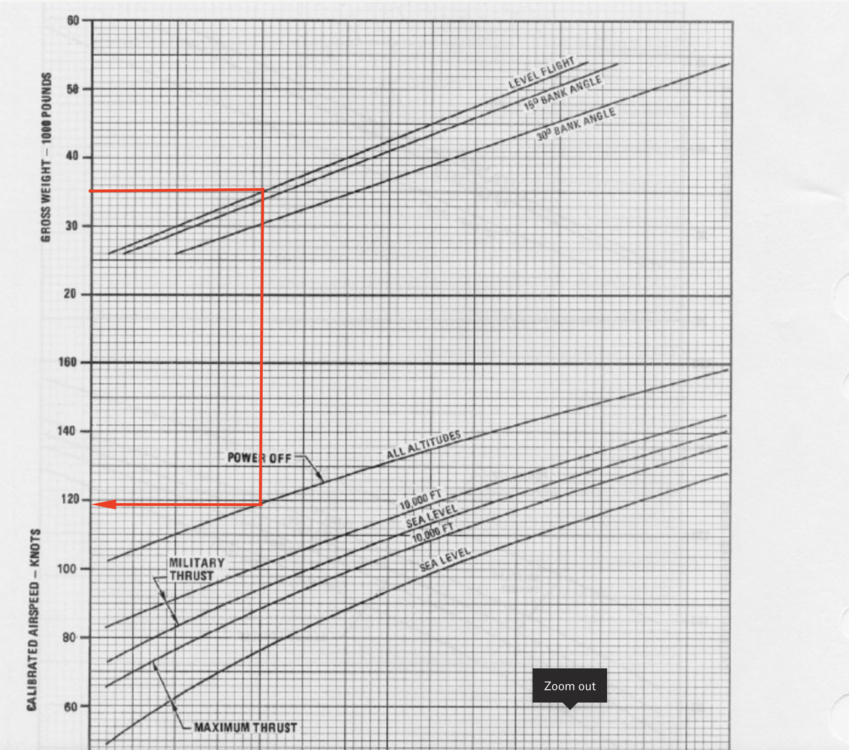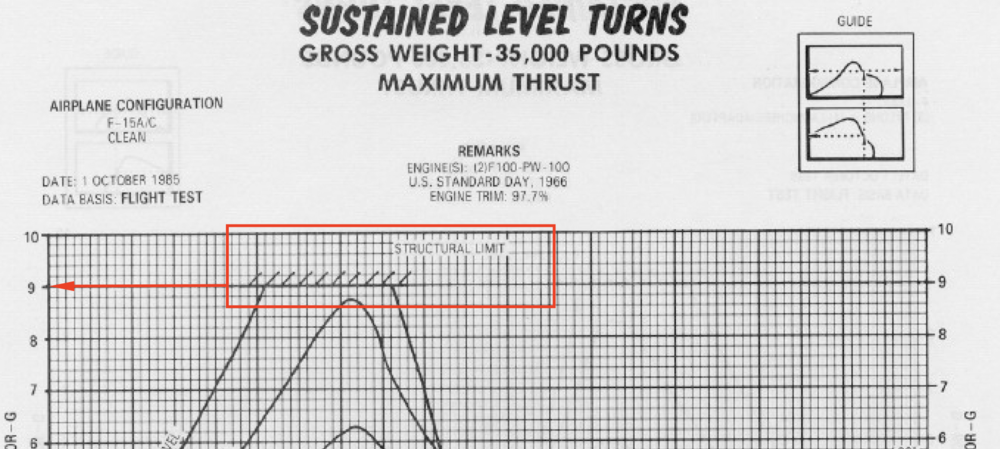-
Posts
835 -
Joined
-
Last visited
Content Type
Profiles
Forums
Events
Everything posted by Cmptohocah
-
That is awesome. I had no idea that the DM was updated. Nothing to argue here, I agree.
-
Nope I have not tried it. Was there some update in the meanwhile? The entire discussion was based of a GIF provided some posts ago, where a DCS Eagle did 3 sets of -4G to above 12G pulls without any issues. Have a look at the video I posted. Three ex. navy/air force pilot literally saying the opposite.
-
Hi @Exorcet, I kind of messed up on my initial explanation, so I will try to explain a bit better now. I made a critical error when I said that the lift is equal to zero and you have a good point there. Now, having said that, let's consider a straight and level airplane flying: vertically it will have 2 forces actin' on it: lift and weight and they are in balance. Let's also say that total lift produced is a combination of A, B, C, D... lift components, where a significant portion of this lift is produced by the wing hitting the airflow at some angle of attack. When in this condition, we say that aircraft is under 1G of load. Let's say that now we start slowing down and want to maintain flight. The only way to compensate for the loss of lift due to loss of speed is to increase AoA of the wings (I am assuming only wings produce lift in this example). As the airspeed goes down, less lift is produced and the AoA needs to be increased and this can be done until maximum (critical) AoA. At this point the wing's lift coefficient is the greatest and for that airspeed it can produce max. amount of lift. After the critical alpha is exceeded, the lift that the wing produces is no longer enough to keep the airplane in the air, ie. G load becomes less than 1 and the airplane is going only one way: down to the ground. In U.S. airforce and/or navy they call this "ballistic". What is the difference between being "ballistic" and flying? Well if nothing changes, while in flight, the aircraft can stay up in the air indefinitely, while when being stalled it's going, you guessed it, down and will eventually collide with planet Earth. I used a rock as an example, but it could be anything really. Ballistic objects, unless they are leaving Earth's orbit, are going down regardless if they have thrust and some lift (like a stalled airplane) or dropping like a rock. So in summary, yes there might be other components of lift still in effect on a fully stalled lift surfaces (like a wing), but they are not enough to keep the aircraft in the air (when in straight and level flight), nor are they enough to keep the airplane turning and in the air when flying in some other plane other than horizontal one. This is the reason why I said anything over max AoA doesn't really matter, 'cause: A. you can't stay up in the air B. you can't turn and stay up in the air It's an equivalent of someone physically chopping portions of your lift surfaces for the amount of lift lost due to airflow separation.
-
So repetitive max-g of around 133% limit was demonstrated IRL combat? Nope, I am just saying that once you hit the over-g it should be more prone to structural failure. Like 12G and then 5G, just an example. Not endless pulls of 12G without any consequences. You have these limits in the F-15 manual. I am pretty sure that RL pilots don't over stress the new planes either. Also I am not talking about fatigue here, but exceeding the material strength (yield point), or plastic deformation of it to be more precise. I spent like 3 posts explaining that this has nothing with the Flanker. IRL you just don't over stress the air frame, period. No one does it and bad things will happen if you do. Unlike DCS where, everyone does it and nothing happens. Pretty simple. Just a question regarding the RL examples you are using: there was a report of a Israeli F-15 landing with most of its wing missing. Does that mean if I take off an Eagle's wing in DCS it should still be flying?
-
But wait. These people flew professionally in real life almost all of the Blue modern jets we have in DCS: F-15, F-16, F-14 and F/A-18 and some of them were with high ranks. They are saying exactly the same thing that the manuals are saying and this is clearly not what happens in the sim. It's not fair to take things out of context like that, we need to look at a bigger picture. Think of a paper clip, once you over stress it and bend it, it will not snap off straight away, but after that you can't really deform it much without failure. It's a simplified example, I know, but it paints the picture. Sure you can pull 12G's, but after that you should be toast as any additional loading increases the risk of catastrophic failure dramatically. This is how it should be in DCS too. What do we have instead? We basically have unlimited strength of the material, so you are free to exceed the G limit by how many times you wish. This is just for the structural failure, but there are other parts of the aircraft system that have G limits also. One of them being stores and their respective rails. What about asymmetrical loads?
-
Thanks for the images, they look awesome. Well technically you are right, it's never 0, but effectively most of the lift is gone so we might as well approximate it to be 0, or "vanish" as you put it. As you can see in the side views, the airflow is almost completely detached, so there's not gonna be any effective lift on those wings. The (majority of) lift comes from difference in pressure between the top and the bottom surface of the lift (sub-sonic regime), and if there is no flow over the top of the wing there's no difference in pressure, so in the end it's the same thing. No airflow, no low pressure, no pressure difference... you get where I'm going with this. Flying at lower speed than the stall speed is not flying, it's dropping. Technically it's not about the speed, it's about critical AoA, but more often than not this limit is expressed as speed - I guess it's easier for pilots to use. When you are at the stall speed, you are effectively reaching your AoA limit for a certain weight, 'cause at that point you've reached your max lift and the lift force is equal to your weight. If you slow down at this point, the only way to maintain level flight is to increase AoA and this will cause a stall. Just a small explanation on what I mean by "not flying". If you throw a rock up in the air, for example, it will seem like it's flying, it's gaining height and has certain speed, but that does not mean it's flying, in a sense that it will come down eventually. A stalled aircraft is the same as that rock - it will eventually hit the ground, as long as the stall condition exists. P.S. Technically I think you could (could be wrong also) produce lift by just lower part of the wing, but the amount of thrust required to do that is probably not realistically possible, so I did not even consider it.
-
It could be a case of connection issues or rather syncing issues. Strange things can happen in multiplayer.
-
A wing in a full stall condition is producing exactly 0 lift force. When an airplane is in a cobra, it is still in the air yes, but it's no longer flying. The reason it seems that it is, is 'cause the maneuver is only temporary in nature, but if you were to leave the airplane in it it would drop out of the sky like a rock. That's the reason why "peak" AoA doesn't matter, as there is only critical (read maximum) AoA above which the wing produces the same lift as an air brake for example. Once the critical angle of attack is reached, the airflow separates and wing can't produce any lift.
-
Ex. fighter pilot talking about over stressing the aircraft in flight. Basic gist of it: once you over-stress the airframe, the fight's over. Timestamp: 33:26
-
We could do a flight test and measure the AoA at stall speeds. For example: idle power level flight, at 35k lb should stall at around 119 knots IAS. Then we can take the measurement of the AoA and this would be the AoA limit. I don't have access to DCS at the moment, so I can't test it my self.
-
Looks like the structural limit for the Eagle A/B/C is 9G - same as the Fulcrum. This is for clean config, with external stores it goes down to 8.6G.
-
Doesn't really matter how much it went as long as the wing is stalled. I mean, for example: if the max AoA is 30, it doesn't matter if the wing is at 31 deg or 131 deg, 'cause it's not producing any lift.
-
It can do 54deg. without stalling? Did I get that right?
-
Was this in MP?
-
Where did you guys find the CAD drawings fro the R-27?
-

investigating Thrust to weight ratio: confused
Cmptohocah replied to bkthunder's topic in MiG-29 for DCS World
Unfortunately I don't have access to DCS at the moment. I will re-test and verify the results and post them summed up here once done. -

investigating Thrust to weight ratio: confused
Cmptohocah replied to bkthunder's topic in MiG-29 for DCS World
I guess we just need to wait for someone from ED to respond to our findings. -

investigating Thrust to weight ratio: confused
Cmptohocah replied to bkthunder's topic in MiG-29 for DCS World
-
Just out of curiosity: what did you fly on?
-

investigating Thrust to weight ratio: confused
Cmptohocah replied to bkthunder's topic in MiG-29 for DCS World
Good question. Manual doesn't specify this, but I would say probably IAS. The difference at 1000m, between TAS and IAS, is only around 5%. -

investigating Thrust to weight ratio: confused
Cmptohocah replied to bkthunder's topic in MiG-29 for DCS World
Another thing that might verify thrust/drag, if you guys feel inspired to try it out, is a straight and level flightm, according to the manual, acceleration at 1000m altitude should be: - 600km/h to 1100km/h in 13.5s - 1100km/h to 1300km/h in 8.7s Now the manual doesn't mention anything about the weight and load out, so I would assume that standard Russian setup applies here: 50% fuel 13.000kg weight with 2xR-27R and 2x73. -

investigating Thrust to weight ratio: confused
Cmptohocah replied to bkthunder's topic in MiG-29 for DCS World
It could also be that drag was adjusted to match the produced thrust and hence have same performance as the chart - at the moment I have no proof of this. The only thing we do know is that, in DCS, MiG-29A produces somewhere around 13.5t of static thrust at max power (full AB). Now it's a question of finding out what kind of static thrust the real engines provide when on a Fulcrum A. From that chart that ED shared, it seems that they should produce a combined thrust of 16t, but I am not 100% sure as I would need more information related to this particular chart. -

investigating Thrust to weight ratio: confused
Cmptohocah replied to bkthunder's topic in MiG-29 for DCS World
It was my bad for not explaining better. This should still work between the script tags, check out your browser's console. Depending on what browser you use you should be able to right-click and click on "inspect". Also you could alternatively use an online service like "jsbin" and click "run" button - output should be in the console. -

investigating Thrust to weight ratio: confused
Cmptohocah replied to bkthunder's topic in MiG-29 for DCS World
What were the masses of the F-18/F-16? -

investigating Thrust to weight ratio: confused
Cmptohocah replied to bkthunder's topic in MiG-29 for DCS World
Here's a chart of longitudinal acceleration vs time/speed: It seems that thrust-to-weight ratio for mass of 13.7 tons, is somewhere around 1.0-1.1 (on average) up to 100km/h (red line).






